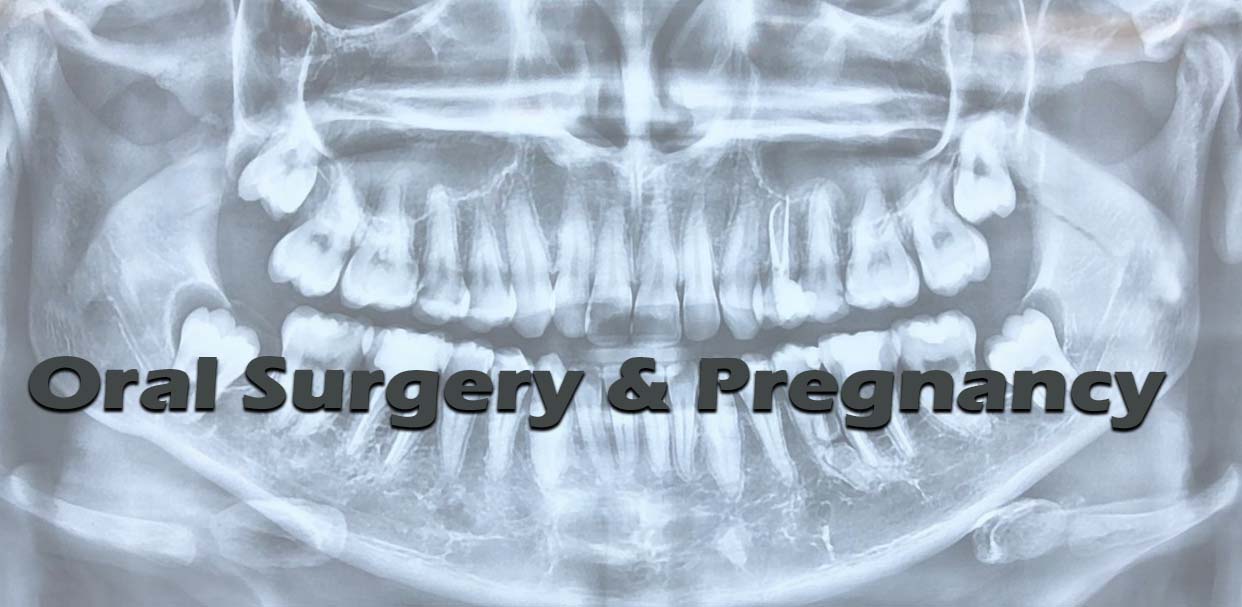Pregnancy (apart from other problems) can cause significant effects in the mouth and can affect dental & management.
Oral Effects and Management Considerations
- Aggravated gum disease (gingivitis) and the
- development of “stalked” gum tissue (epulis formation) [link to epulides]
- Variable effect on recurrent oral ulcers (aphthae) [link to Oral Ulceration]
Management Considerations
- Risk of low blood pressure and fainting when laid flat
- Possible raised blood pressure of pregnancy
- Possible anaemia (iron / folate deficiency)
- Vomiting especially with General Anaesthesia (GA)
Occasionally, recurrent oral ulcers (aphth?) [link to Oral Ulceration] resolve during pregnancy but may worsen due to iron / folate an?mia.
Oral Surgery or elective dentistry should be postponed until after the baby is born, or, in extremis, in the second trimester
Oral Surgery or elective dentistry should be postponed until after the baby is born, or, in extremis, in the second trimester.
During the first trimester, organ development of the fœtus is taking place. During the third trimester, it can be uncomfortable for the mother to lie back in the dental chair, especially for an extended period of time. In addition, if it is a particularly stressful situation for the mother, there is the slight possibility that premature labour may be induced.
Local anaesthesia is generally safe.
Possible Hazards to the Fœtus from Dental Procedures
- X-rays are hazardous especially in first trimester
- Reduced drive to breathe due to sedatives
- Staining of teeth due to the use of certain types of antibiotics (such as doxycycline or tetracycline)
- Theoretical risk of depressed vitamin B12 metabolism by nitrous oxide (& “laughing gas”, used in GA)
- Prilocaine and articaine (local anaesthetics) may cause methaemoglobinaemia [en.wikipedia.org/wiki/Methemoglobinemia] (raised levels of methaemoglobin that can cause tissues to be deprived of adequate oxygen) which can lead to blue-baby syndrome [en.wikipedia.org/wiki/Methemoglobinemia]
- Theoretical risk of womb (uterine) contraction caused by felypressin (a component of some local an?sthetics)
- Fœtal malformation risk from certain drugs such as thalidomide (now used for certain immune disorders), & retinoids (used for certain skin conditions), etretinate & (used experimentally for certain types of “white patches” in the mouth), azathioprine (used for certain immune disorders including Behçet’s syndrome) and possibly other drugs
- Aspirin may cause bleeding in the newly born
The main risks of foetal abnormalities comes from drugs and radiation; the hazard is greatest during the first trimester.
The risk from dental X-rays are small but only essential radiographs should be taken, the minimal radiation exposure should be given and the patient should wear a lead apron.
Few drugs are known to cause fœtal malformations for humans and in many cases, the risk is no more than theoretical or results only from prolonged high dosage.



